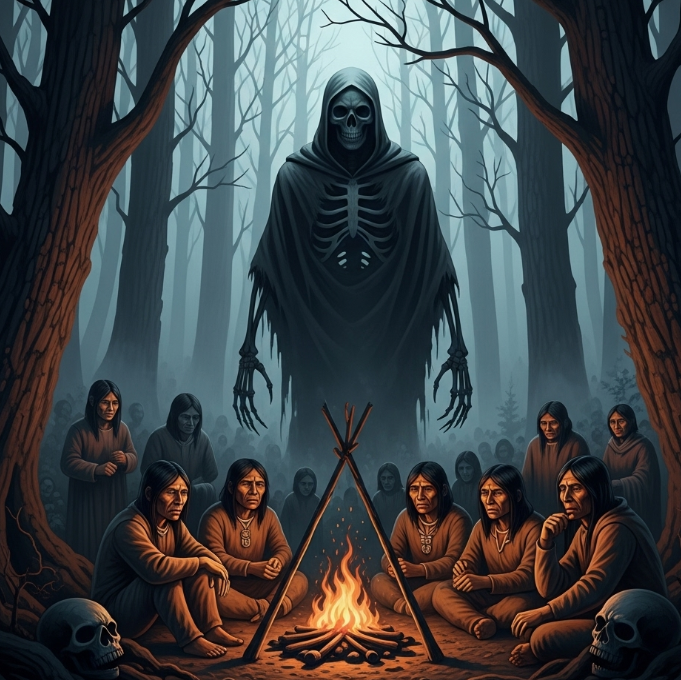In the vast forests and unforgiving winters of the North American Great Lakes region and parts of Canada, a chilling figure stalks the edges of human consciousness — the Wendigo. This mythic creature, rooted deeply in the oral traditions of Algonquian-speaking peoples such as the Cree, Ojibwe, Innu, and Saulteaux, serves as both a monster and a moral lesson, a supernatural embodiment of hunger, greed, and the violation of communal taboos.
The Origins of the Wendigo
The term “Wendigo” (also spelled Windigo, Wetiko, or Witiko, depending on the dialect) roughly translates to “the evil spirit that devours mankind.” The myth emerges from environments where starvation was an all-too-real threat during long, harsh winters. In these stories, the Wendigo is not just a monster lurking in the woods — it is also the terrifying result of a human who succumbs to the ultimate taboo: cannibalism.
Legends describe the Wendigo as once-human beings transformed by an insatiable hunger for flesh. As they feed, they grow in proportion to their consumption, yet their hunger is never satisfied. Emaciated yet towering, with frost-bitten skin stretched over bones, glowing eyes, and a heart of ice, the Wendigo roams the forests in search of its next victim — often preying on those who wander alone or are isolated by snowstorms.
Starvation and Greed: The Heart of the Myth
The Wendigo myth is more than a tale of horror; it is an allegory for the dangers of selfishness and unchecked appetites. In communities where survival depended on mutual care and strict resource sharing, greed could mean death for the many. The Wendigo, then, embodies the social horror of placing individual survival above collective well-being.
During times of famine, this cautionary tale reminded people that giving in to the desperation of hunger and resorting to cannibalism meant losing one’s humanity and becoming a monster in the eyes of the community — and the spirits.
The Wendigo’s Place in Native American Lore
In Algonquian cosmology, the Wendigo also symbolizes spiritual imbalance. Shamans were often called upon to diagnose and treat what some anthropologists describe as “Wendigo psychosis” — a culturally specific mental disorder in which a person developed an intense craving for human flesh, even when other food was available.
European explorers and fur traders in the 17th and 18th centuries recorded such cases, further cementing the Wendigo in the Western imagination as an eerie symbol of the untamed North American wilderness and the dark side of human survival instincts.
The Enduring Power of the Wendigo
Today, the Wendigo remains a potent figure in popular culture, inspiring horror films, novels, and video games. Yet, beyond its frightening imagery, the legend endures as a powerful reminder of humanity’s capacity for destruction when driven by greed, hunger, or disregard for communal bonds.
In essence, the Wendigo is not merely a beast to fear in the forested shadows, but a timeless warning whispered by the ancestors: respect the balance of nature, care for your community, and beware the monster that can awaken within us all when we consume more than we need.







